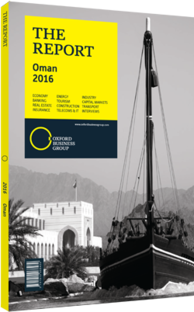Abdulaziz Mohammed Al Balushi, CEO, Ominvest: Interview

Interview: Abdulaziz Mohammed Al Balushi
How is the low price of oil at the moment impacting performance of the markets in the sultanate?
ABDULAZIZ MOHAMMED AL BALUSHI: Oil prices are down by around 60% to $45 a barrel in November 2015 after touching $116 in June 2014. The Ministry of Finance has reported a large budget deficit of OR2.9bn ($7.5bn) in the first nine months of 2015, and for the full year the IMF expects the budget deficit to be around 14.8% of GDP. Going forward, sustained low oil prices will impact Oman’s fiscal and external balances as Oman will need to fund deficits through borrowing from local and international markets. As the government’s oil revenues shrink, local banks will receive fewer government deposits, which will reduce the funds available for private sector projects. This has already impacted GCC money markets as interest rates have climbed since oil prices started declining. Oman’s debt capital market may also feel the pinch as the government and private sector may have to issue debt at higher interest rates. However, on the positive side, increased sovereign debt issuances are helping to create a vibrant debt capital market in Oman, which is required for greater financial stability in the long term. In the equity market, we have witnessed a 23% decline in Muscat Securities Market since it reached a multi-year high in September 2014. We believe that the decline in markets is creating good investment opportunities in some listed companies for long term investors, as shares of some blue chip companies are trading at multi-year lows and at attractive valuations.
How will recent debt issuances by the government help broaden the market and potentially encourage corporates to consider issuances?
BALUSHI: Increased sovereign debt issuances will create a vibrant sovereign debt market, which will help build the necessary tools for monetary policy, such as establishing a yield curve that would provide a benchmark for the pricing of corporate debt. This initiative will surely encourage corporates to tap into Oman’s debt capital markets.
Currently, the size of Oman’s bond market is very small. Bonds represented only 8% (OR1.2bn, $3.1bn) of Oman’s capital markets at the end of 2014, while equities represented the remaining 92% (OR13.4bn, $34.7bn). Government bonds and sukuk (Islamic bonds) accounted for 87% of the bond market while corporate bonds and sukuk accounted for 13%. This is because Omani corporations have financed their projects through commercial bank loans instead of tapping the debt market.
What can Oman do to grow its capital markets in the context of the GCC?
BALUSHI: Currently, Oman’s stock market enjoys healthy participation from foreign investors. In 2014, foreign holdings of shares of Omani listed companies were the highest in the GCC, 30% of total stock market capitalisation, versus 12% for Saudi Arabia and 6% for Dubai. However, Oman’s stock market is very small compared to its regional peers, and the average trading value is low. In 2014, Oman’s total stock market capitalisation was 2.4% of total GCC stock market capitalisation and trading value was less than 1% of total GCC trading value. On the valuation side, Oman’s MSM30 Index price-to-earnings (PE) ratio is currently low at 10x, much lower when compared with Saudi’s Tadawul index PE ratio of 16x and Dubai’s DFM index PE of 13x. The discount to regional peers is partially attributable to the UAE and Qatar markets’ upgrades to emerging market status by MSCI in 2014, and to the Saudi stock market opening to foreign investors for the first time in 2015. Oman’s stock market, however, is still considered a frontier market by MSCI. To encourage foreign participation in the local market, the number of debt and sukuk instruments needs to grow, stock market liquidity needs to rise and there should be more industry diversification in the market.
You have reached the limit of premium articles you can view for free.
Choose from the options below to purchase print or digital editions of our Reports. You can also purchase a website subscription giving you unlimited access to all of our Reports online for 12 months.
If you have already purchased this Report or have a website subscription, please login to continue.

